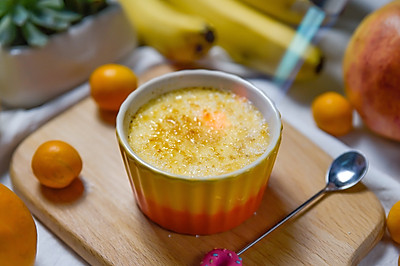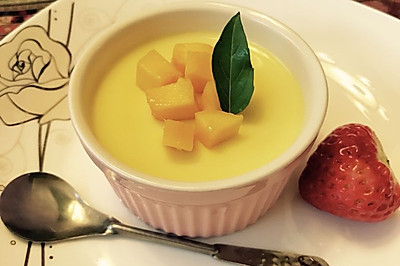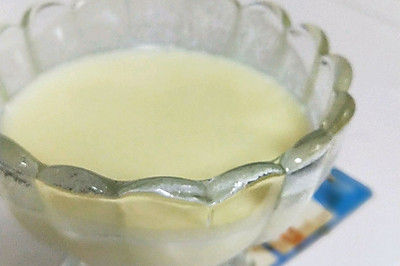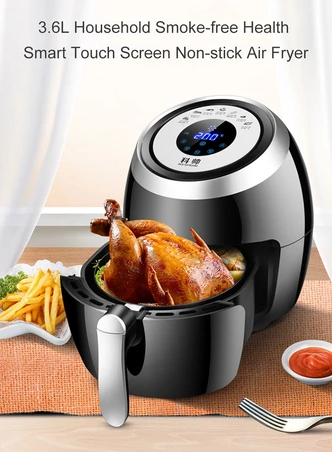
Pudding Bread
(70597 views)Cooking ingredients
Cooking Steps

Step1:Add 100 g high gluten powder into 500 g water. Mix water and high gluten powder evenly.

Step2:Put it on the stove and heat it (use the eggbeater to keep stirring to prevent the bottom of the pot from burning). Heat to 65 ℃ and leave the fire. There will be striation when the batter is stirred.

Step3:Cover with plastic film to prevent water loss and skin formation. It can be used at room temperature. It is better to refrigerate for one night. There are many kinds of soups made here, because a small amount of soups are easy to be burnt. If the soup is not used, it can be sealed and stored in the refrigerator for 12 days. If the soup becomes gray, it can not be used again. If it's troublesome, you can reduce the amount of raw materials in proportion. Mix the flour and boiling water directly to make soup seeds. Pay attention that the flour can't agglomerate in the mixing proces

Step4:Put material a in the mixing basin. Yeast and sugar salt should be placed on two sides to avoid yeast losing activity. Then put in material B.

Step5:Mix slowly and evenly before turning to medium speed.

Step6:Material C is added when the dough is stirred into a dough and has glute

Step7:Mix the fat and dough slowly first, then turn to medium speed mixin

Step8:Stir until the film can be pulled to take out the dough. Take out a smooth surfac

Step9:Basic fermentation - the dough is fermented to twice its size in a warm environment. The ideal environment is 2829 ℃ and 75% humidity. It can be fermented at low temperature for a long time. Do not ferment at high temperature to avoid too rough bread tissue. I usually dip the dough basin into a warm water basin. Cover two basins with plastic wrap. The time of basic fermentation may vary from 40 minutes to one or two hours depending on the temperature and humidity. In a word, it must be doubled. Stick high gluten powder on your fingers and poke it down from the center of the dough. No retraction means the fermentation is finished. Retraction means it will take time. Dough collapse means excessive fermentation.

Step10:After the basic fermentation, take out the dough and exhaust. Here's a hint. Because of the high water content, the dough will be very sticky. In the basic fermentation, you can first spread a thin layer of olive oil in the fermentation basin, or sprinkle some hand powder to prevent sticking during the exhaust section. I use a rolling pin with convex points. It's very convenient to press it to exhaust.

Step11:Divide the exhausted dough into 60 grams of each dough. It can be divided into 9 parts.

Step12:Tighten each dough into a circle. It's important to clos

Step13:

Step14:

Step15:

Step16:

Step17:

Step18:

Step19:

Step20:

Step21:

Step22:

Step23:

Step24:
Cooking tips:There are skills in making delicious dishes.
 Chinese Food
Chinese Food












